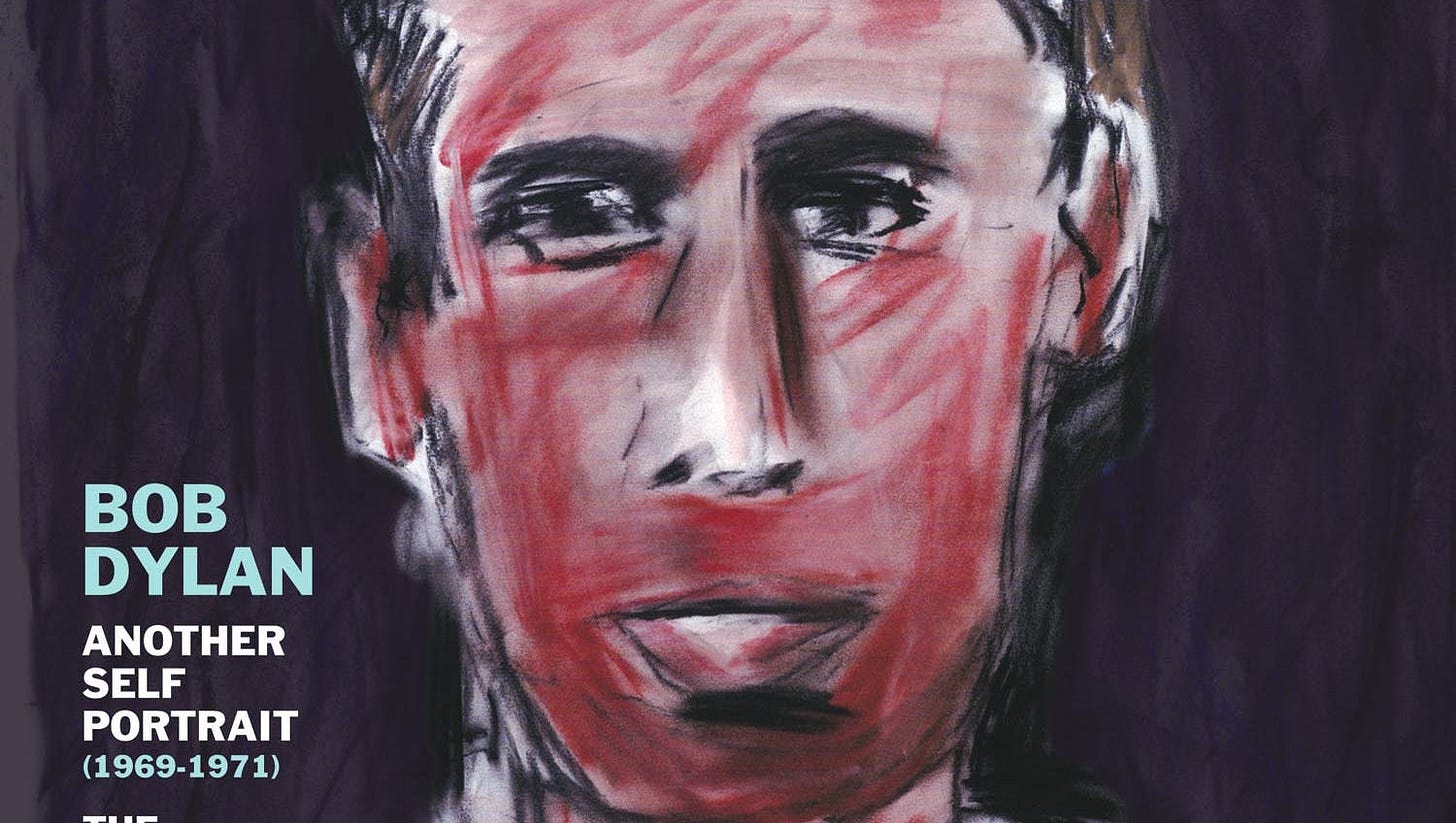Another Self Portrait
Bob Dylan’s two-record Self Portrait album was generally considered by the press and a lot of his audience to be his first major blunder.
When it was released on 1970, Bob Dylan’s two-record Self Portrait album was generally considered by the press and a lot of his audience to be his first major blunder. The album was comprised of 1969 sessions in Nashville mostly of country-western standards and hits and sessions in New York a year later of traditional folksongs and songs of other writers, with a few live tracks from Dylan’s 1969 appearance at the Isle of Wight thrown in as sort of a bonus. Several tracks featured for the first time on a Dylan record a string section, and also for the first time on a Dylan record, female backup vocalists. The Nashville songs seemed perhaps overly slick, the New York songs seemed rough, at times unpolished, and several had been sent to Nashville for additional overdubs (though this wasn’t known at the time). There was also a smattering of new original tunes, but one was an instrumental, one was Dylan humming, and the other, the opening song “All the Tired Horses” was sung by backup …
Keep reading with a 7-day free trial
Subscribe to The Joker and the Thief — Newsletter to keep reading this post and get 7 days of free access to the full post archives.


